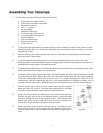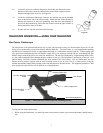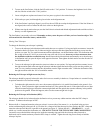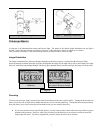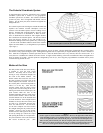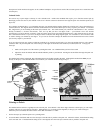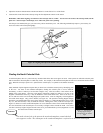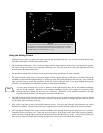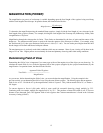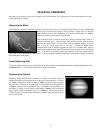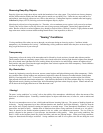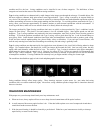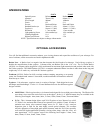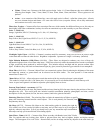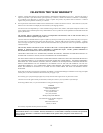
12
M
M
A
A
G
G
N
N
I
I
F
F
I
I
C
C
A
A
T
T
I
I
O
O
N
N
(
(
P
P
O
O
W
W
E
E
R
R
)
)
The magnification (or power) of a telescope is variable depending upon the focal length of the eyepiece being used along
with the focal length of the telescope. In equation format, the formula looks like this:
Magnification
FL telescope
FL eyepiece
=
()
()
To determine the magnification using the standard 20mm eyepiece, simply divide the focal length of your telescope by the
focal length of the eyepiece (20mm). For example, dividing the focal length of the Firstscope 90 (1000mm) by 20mm yields
a magnification of 50 power.
Magnification through the telescope has its limits. These limits are determined by the laws of optics and the nature of the
human eye. The maximum usable power is equal to 60 times the aperture of the telescope (in inches). For example, using
the 70mm model (2.8") then your maximum useful power is 168x (2.8" x 60). You can create power higher than this limit
but the images will be dark and blurred with poor contrast.
The maximum power is used only under ideal conditions which are not common. Most of your viewing will be done in the
range of 25x to 120x. Higher powers are used mainly for lunar and planetary observing under ideal seeing conditions.
D
D
e
e
t
t
e
e
r
r
m
m
i
i
n
n
i
i
n
n
g
g
F
F
i
i
e
e
l
l
d
d
o
o
f
f
V
V
i
i
e
e
w
w
Determining the field of view is important if you want to get an idea of the angular size of the object you are observing. To
calculate the actual field of view, divide the apparent field of the eyepiece (supplied by the eyepiece manufacturer) by the
magnification. In equation format, the formula looks like this:
Apparent Field of Eyepiece
True Field =
Magnification
As you can see, before determining the field of view, you must calculate the magnification. Using the example in the
previous section, we can determine the field of view using the same 20mm eyepiece. The 20mm eyepiece has an apparent
field of view of 45°. Divide the 45° by the magnification, which is 50 power. This yields an actual field of .9°, or almost a
full degree.
To convert degrees to feet at 1,000 yards, which is more useful for terrestrial observing, simply multiply by 52.5.
Continuing with our example, multiply the angular field .9° by 52.5. This produces a linear field width of over 47 feet at a
distance of one thousand yards. The apparent field of each eyepiece that Celestron manufactures is found in the Celestron
Accessory Catalog (#93685).



